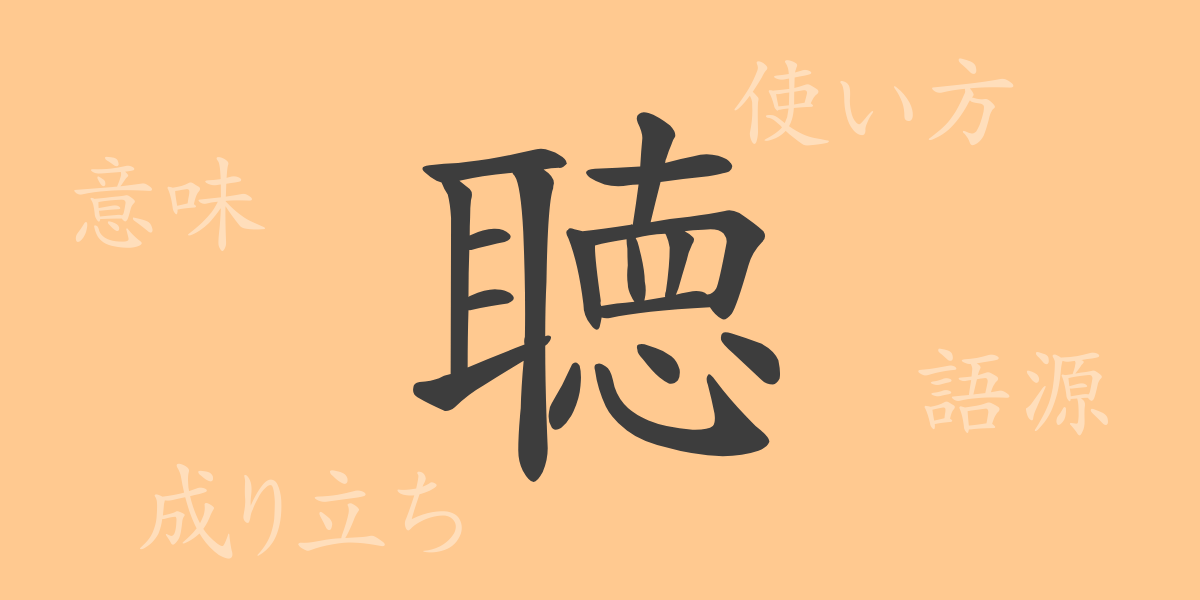The Japanese kanji ‘聴(チョウ)’ captures the essence of sound waves, interpreting their meanings and resonating with the heart. This single character embodies the beauty and complexity of the Japanese language. In this article, we’ll explore the charm of the frequently used kanji ‘聴’, including its origins, meanings, applications, and dive into the world of this character.
Origins of ‘聴(チョウ)’
The kanji ‘聴’ combines ‘耳’, indicating hearing, with ‘斤’, representing an axe, symbolizing the power to dissect sounds. Originally depicting focused listening, especially in music, it has evolved to mean listening intently over time. This transition exemplifies how words adapt within cultures and societies.
Meaning and Usage of ‘聴(チョウ)’
‘聴’ primarily means ‘to listen’, but it conveys not just hearing sounds but listening attentively or with intent. It’s often used in formal or official contexts, appearing in terms such as ‘聴取(ちょうしゅ)’ and ‘聴聞(ちょうもん)’, and also in enjoying music, as in ‘コンサートを聴く’.
Pronunciation, Stroke Count, and Radical of ‘聴(チョウ)’
Let’s look more closely at the kanji ‘聴’:
- Pronunciation: On’yomi ‘チョウ’, Kun’yomi ‘きく’
- Stroke Count: 17 strokes
- Radical: Ear (‘耳(みみへん)’)
Phrases, Idioms, and Proverbs Using ‘聴(チョウ)’
The kanji ‘聴’ is used in a variety of phrases, idioms, and proverbs, each carrying unique meanings. Here are some examples:
- 聴覚(ちょうかく) – The sense of hearing.
- 聴取(ちょうしゅ) – Actively listening to gather information or details.
- 公聴会(こうちょうかい) – A public hearing to gather opinions on specific issues.
- 一聴一笑(いっちょういっしょう) – To laugh immediately upon hearing something, indicating a superficial response without deep thought.
- 耳を傾ける – To listen attentively to someone else’s story, an idiom that embodies the essence of ‘聴’.
Conclusion on ‘聴(チョウ)’
The kanji ‘聴’ teaches us the importance of carefully listening to the sounds around us, emphasizing not just hearing but understanding and empathizing in communication. This deep insight encapsulated in one character highlights the rich expressiveness of the Japanese language, urging us to appreciate the depth of ‘listening’ in our daily interactions.

























